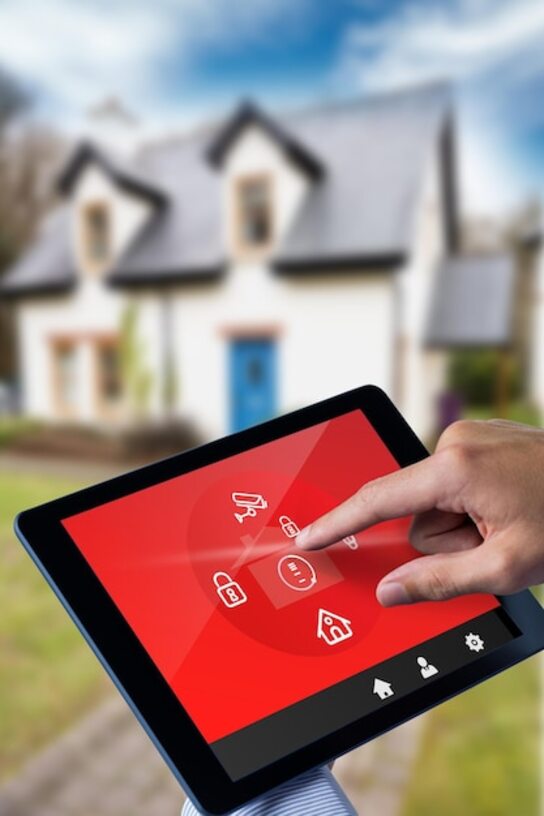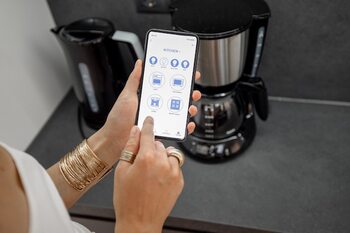Security technology that protects your home from digital threats.

The security of your home is not limited to doors and windows; in the digital age, virtual threats are lurking. Security technology has evolved to provide you with effective tools that protect both your physical space and your personal data. In this article, we will explore how these innovations can safeguard your home against cyberattacks and digital fraud, ensuring a safer and more peaceful environment for you and your family. Discover how to keep digital threats at bay!
What is digital security technology?
Digital security technology refers to the set of tools, systems, and processes designed to protect information and devices connected to the Internet from various cyber threats. In a world where more and more devices are interconnected, from smartphones to smart appliances, the need for robust defense has become crucial. This technology encompasses everything from antivirus software and firewalls to more advanced solutions like multi-factor authentication and data encryption, which act as barriers against unauthorized access and information theft.
Additionally, digital security also includes best practices that users should adopt to enhance their own protection. This involves educating oneself about common tactics used by hackers, such as phishing or malware, and learning to identify warning signs in suspicious emails or links. The combination of technological tools with a proactive awareness of digital threats can create a safe environment not only for your personal data but also for your home in general. Adopting these measures is essential today to ensure that your physical space is protected both physically and virtually.
2. Main digital threats affecting households
Digital threats that affect homes are varied and can have devastating consequences if not managed properly. One of the most common risks is malware, malicious software designed to infiltrate devices and steal sensitive information. This type of attack can come from fraudulent emails, misleading websites, or even seemingly harmless applications. Once malware has penetrated a home network, it can compromise users' privacy and facilitate access to financial or personal data that can be used for fraud.
Another significant threat is phishing, a technique used by cybercriminals to trick people into revealing confidential information such as passwords or credit card numbers. This is often done through emails or messages that appear legitimate but actually lead to spoofed websites. Additionally, connected devices in smart homes can also be vulnerable to attacks if not adequately protected. The lack of regular updates and weak passwords can make it easier for intruders to gain access, turning your home into an easy target for those looking to exploit weaknesses in digital security.
3. Smart devices: Allies in home security
Smart devices have become essential allies in home security, offering innovative solutions that go beyond traditional alarm systems. From internet-connected surveillance cameras to smart doorbells with facial recognition features, these devices allow you to monitor your home in real time from anywhere. Thanks to mobile applications, you can receive instant notifications about suspicious activities and access live images, providing you with a sense of control and peace of mind. Additionally, many of these devices feature artificial intelligence that can learn behavior patterns, helping to identify potential threats before they occur.
The integration of smart technology has also enabled home automation, which significantly contributes to security. For example, lighting systems can be programmed to simulate your presence when you are not at home, thereby deterring potential intruders. Similarly, smart locks offer an additional level of protection through the use of codes or apps for remote access. This eliminates the need for physical keys and allows homeowners to grant temporary access to friends or services without compromising the overall security of the home. In summary, by implementing smart devices in your house, you not only enhance its physical security but also protect your personal data against cyber threats.
4. Connected alarm systems: How do they work?
Connected alarm systems are one of the most significant innovations in home security, as they combine advanced technology with internet connectivity to provide comprehensive protection. These systems operate through sensors that detect movements, unusual sounds, or even changes in temperature, sending instant alerts to your smartphone or connected device. This real-time monitoring capability allows homeowners to stay informed of any suspicious activity, no matter where they are, adding an extra layer of security against potential intrusions. Moreover, many of these systems can integrate with other smart home devices, such as security cameras and electronic locks. This not only enhances the efficiency of the alarm system but also creates an interconnected ecosystem where each component works together to protect your home. For example, if a sensor detects movement while you're away, you can activate the camera to see live what is happening and make informed decisions on how to proceed. In this digital age, having a connected alarm system is essential to stay one step ahead of both physical and digital threats.
The installation and configuration of these systems are usually simple and accessible even for those without prior technical experience. Many brands offer intuitive apps that allow you to manage all aspects of the system from the palm of your hand. Through these apps, you can adjust custom settings according to your needs and receive instant notifications about any unusual activity in your home. With this technology at your fingertips, securing your home against digital threats has never been easier or more effective.
5. The importance of encryption on your devices
Encryption has become an essential tool for protecting the information we handle on our devices. By encrypting data, we transform readable information into an unreadable format for those who do not have the necessary credentials to access it. This means that even if an attacker manages to infiltrate your network or device, sensitive data will remain protected and out of their reach. In a world where identity theft and digital fraud are increasingly common, implementing encryption is a fundamental measure to safeguard your personal data and prevent it from falling into the wrong hands. In addition to protecting information stored on individual devices, encryption also plays a crucial role in digital communications. Messaging and email applications with end-to-end encryption ensure that only you and the person you are communicating with can read the exchanged messages. This is especially important when it comes to sharing confidential or financial information. Adopting these technologies not only provides peace of mind but also creates a safer digital environment for you and your family by minimizing the risks associated with cyber threats. In summary, encryption is not just an option; it is a vital necessity in our increasingly connected daily lives.
6. Antivirus and protection software: What you need to know
Currently, having robust antivirus and protection software is essential for maintaining digital security at home. These programs are designed to detect, prevent, and remove threats such as viruses, malware, and ransomware that can infiltrate your devices through emails, downloads, or even malicious websites. They not only protect your personal information but also help safeguard the integrity of other devices connected to your network, such as security cameras and smart home systems. Choosing the right software can make the difference between a safe digital experience and a potential cyber disaster.
Additionally, it is important to remember that antivirus is not a one-size-fits-all solution; it should be complemented with good digital practices. Keeping the operating system and all applications updated is crucial to closing security gaps that attackers could exploit. It is also advisable to conduct regular system scans to detect any anomalies. The combination of effective software along with responsible browsing habits creates a safer environment for you and your family, allowing you to enjoy the benefits of technology without unnecessary concerns about digital threats.
7. Wi-Fi network security: Protect yourself against intruders
Wi-Fi network security is a fundamental aspect of protecting your home from digital intruders. A router without the proper configuration can become an open door for hackers looking to access your personal data, from banking information to account passwords. To strengthen this first line of defense, it is crucial to establish strong and unique passwords that include letters, numbers, and symbols. Additionally, changing the network name (SSID) to one that does not identify the provider or the router model can help deter potential attackers.
Implementing security protocols like WPA3 is also essential for keeping your connections secure. This newer standard offers greater protection against brute force attacks and improves the encryption of transmitted data. Don't forget to disable unnecessary router features, such as remote access or WPS, which can be exploited by intruders. Finally, keep your firmware updated; manufacturers frequently release patches to close known vulnerabilities, which means staying up to date with these updates is key to ensuring the integrity of your network and protecting your home against digital threats.
8. Remote monitoring: Surveillance from anywhere
Remote monitoring has become an essential tool for home security in the digital age. Thanks to surveillance cameras and alarm systems connected to the Internet, it is now possible to monitor your property from anywhere in the world. These technologies allow you to receive instant notifications on your mobile device regarding any suspicious activity, giving you peace of mind knowing you can react immediately to any eventuality. Whether you are at the office, on vacation, or simply away for a while, you will have access to real-time images and recordings that help you maintain control over your home. Moreover, remote monitoring is not limited to viewing; many advanced systems offer interactive features that allow you to communicate with people inside your home or even activate devices like lights and sirens. This expands the response capabilities against intrusions and creates a safer environment. By integrating technology like virtual assistants or intuitive mobile apps, the user can manage all aspects of their security from a single location, making protection against digital threats more accessible and effective than ever.
With these smart tools, you not only protect your physical belongings but also your personal data and your family's privacy against potential cyber attacks. In short, remote monitoring represents a revolution in the way we conceive home security, providing an additional layer of essential protection in an increasingly interconnected world.
9. Tips to keep your devices secure
To ensure the security of your devices and, consequently, the protection of your home against digital threats, it is essential to adopt a series of good practices. First, make sure to keep all operating systems and applications on your devices updated. Updates often include security patches that fix vulnerabilities that could be exploited by cybercriminals. Additionally, consider installing reliable antivirus software and conducting regular scans to detect potential threats. The combination of these actions will help create a strong first line of defense for your personal information.
Another key aspect is the use of secure and unique passwords for each of your devices and online accounts. Avoid using easy-to-guess combinations or personal information such as dates of birth. Instead, opt for long passwords that include uppercase letters, lowercase letters, numbers, and special characters. Additionally, enabling two-factor authentication adds an extra layer of security by requiring a second verification method before accessing your accounts. Finally, be especially cautious with suspicious emails or unknown links; always verify the source before clicking or providing sensitive information. Adopting these tips will not only protect your home digitally but also give you peace of mind against growing cyber threats.
10. Future of home security technology
The future of home security technology promises to be even smarter and more efficient, driven by advancements such as artificial intelligence and the Internet of Things (IoT). As these technologies are integrated into security devices, systems like cameras, sensors, and smart locks are expected to not only respond to physical intrusions but also detect unusual patterns in user behavior and alert about potential digital threats. The combination of predictive analytics with advanced algorithms will allow for anticipating problems before they occur, thus providing an additional layer of protection for connected homes.
Additionally, privacy and data protection will remain a fundamental priority. With an increase in concerns about the misuse of personal information, security device manufacturers are working hard to implement more robust protocols that ensure user confidentiality. This includes everything from advanced encryption to multifactor authentication in mobile applications. In this context, we are likely to see significant growth in solutions that offer homeowners greater control over their data and total transparency regarding how their information is used. In summary, the future of home security will be marked by a synergy between technological innovation and a renewed focus on comprehensive user protection.



